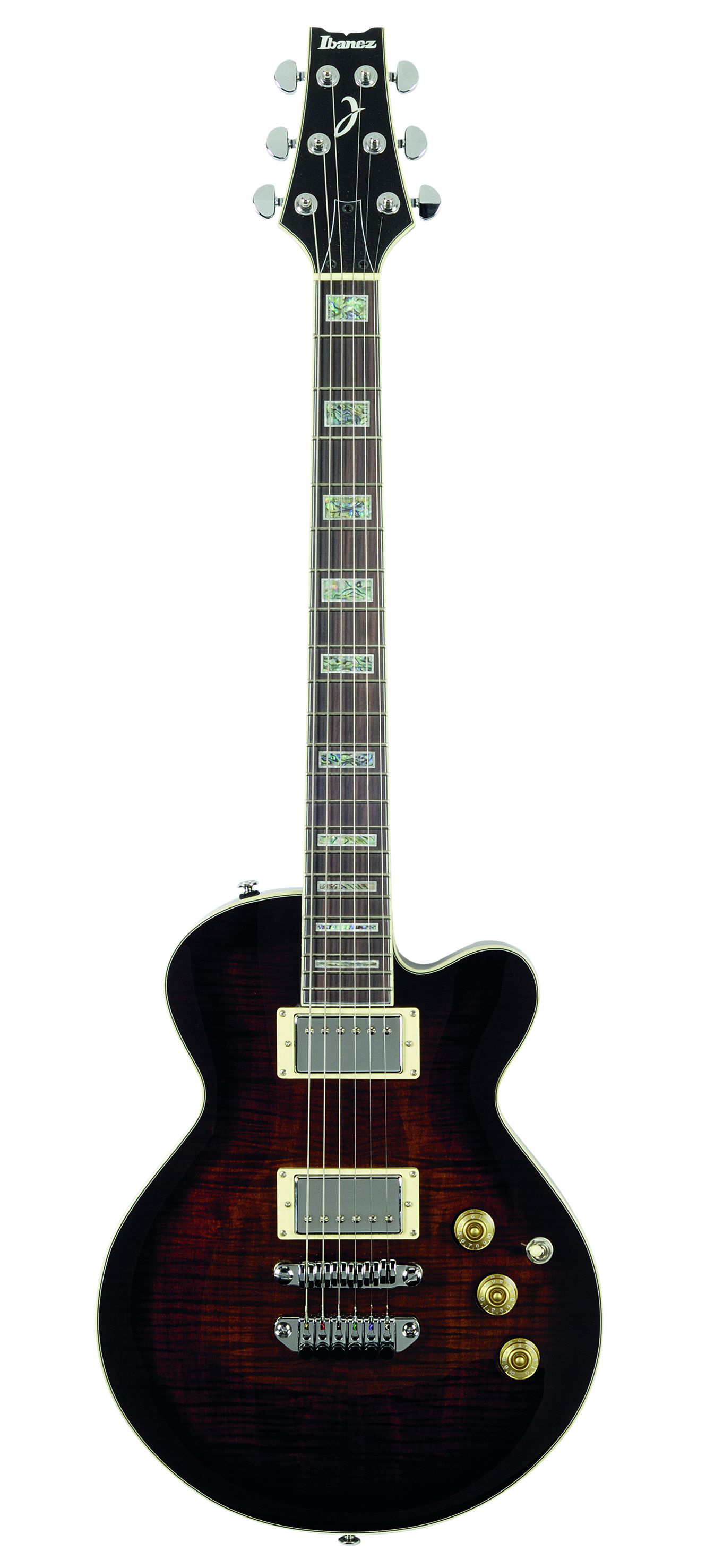MusicRadar Verdict
You could do much worse than investing £329 in an ARC300, even if you've budgeted a bit more for something like an Epiphone Les Paul Standard or Korean Tokai. This Ibanez guitar is considerably better in terms of sound and feel than many of its closest rivals and it's testimony to the kind of quality to price ratio exhibited by modern Chinese manufacture.
Pros
- +
Snug feel. Big sounds. A little pricier than the ARX100 but still good value.
Cons
- -
Tacky abalone fretboard inlays. Some might prefer a more old-school bridge and tailpiece.
MusicRadar's got your back
Ibanez have bought out new Artist Series models some while ago that revisited the company's first forays into original electric guitar design in the early seventies.
Fast forward to the Ibanez class of 2006 and the AR300 has been relocated to the Classic range, while the Artist moniker has been applied to a pair of new electric guitar outlines that share the twin humbucker/set-neck spirit of the original design.
The ARC and ARX Artists are broadly similar in terms of their predominantly mahogany build, twin humbuckers and recessed pair of volumes and single master tone pot.
It might take some players a while to get used to the fact that the bridge pickup's volume control is the middle pot on both guitars, but if you can't adapt over time, it is simple enough to open either guitar up and swap the order around.
Both guitars share the Ibanez Gibraltar III bridge design, a more heavy duty take on the tune-o-matic that allows for increased intonation adjustment and also features saddles far less likely to wear and allow strings to pop out of their guides.
The ARC models feature a single cutaway and are reminiscent of a softened Les Paul shape. It features an arched top and three-a-side headstock outline, with a variation on the original Artist's 'moustache' indent at the top and increased flaring at the bottom. Tuners are chrome kidney-shaped Grover-a-likes that seem dependable enough.
The feel
On picking up the ARC300, it immediately feels very similar indeed to its sibling. It has a marginally deeper neck profile than the ARX100 that ties in with a vibe that is more evocative of a Les Paul, although the ARC300 feels much more snug and compact than Gibson's most famous six-string thanks to a more contoured, svelte body.
Want all the hottest music and gear news, reviews, deals, features and more, direct to your inbox? Sign up here.
On a superficial level the body shape brings to mind some boutique single cutaway designs from the likes of Nick Huber and Don Grosh.
Generally rather understated and appealing with a classic combination of a dark finish over flame maple and chrome humbucker covers, we did feel that the ARC300's look was let down a little by the rosewood fretboard's gaudy abalone block inlays; an attempt to add visual elegance that ends up looking rather cheap.
It's not exactly fur coat and no knickers as there's plenty of quality beneath the surface; we just feel that classic pearloid block inlays would look so much more appropriate. Sometimes less really is more.
The chromed Gibraltar bridge and Quick Change Ultra tailpiece are impressive pieces of hardware that allow for detailed intonation and fine tuning adjustments in combination with minimal fuss when performing string changes.
That said, on an aesthetic level the pairing does look a little jarring at first; it's a lot of chrome on a guitar on which you might reasonably expect just a traditional tune-o-matic and stop bar configuration.
There's also something about tailpieces with fine tuners that makes us think of the seventies, but since the heritage of the Artist series dates back to that most prolific period of Ibanez's history it's no bad thing.
The guitar's fretwork and binding are neatly manicured; none of the fret ends are sharp or protruding and the binding is clean and tidy.
Unlike its candy apple compatriot, the point where the dark violin burst meets the edge binding on the body is free of any real flaws, even under close scrutiny.
The ARC300's upper fret access isn't quite as all-encompassing as the ARX100, but it's pretty damn good for a guitar of this type and positively luxurious in comparison to a Les Paul Standard.
Sounds
Revving up the ARC300 it quickly becomes clear that it's very difficult to split these guitars regardless of the amount of gain employed, even though their individual pickup pairings have different model numbers.
The ARX100 is perhaps a little more raw and aggressive, while the single cutaway ARC300 is possibly a touch more polite, the maple maybe reining in some of the mahogany's natural mid-range push.
We're talking the tiniest variations here though, and not something that is going to be particularly apparent at gig volumes or in a recorded mix, especially with compression and equalisation.
Chris Vinnicombe worked with us here on the MusicRadar team from the site's initial launch way back in 2007, and also contributed to Guitarist magazine as Features Editor until 2014, as well as Total Guitar magazine, amongst others. These days he can be found at Gibson Guitars, where he is editor-in-chief.
